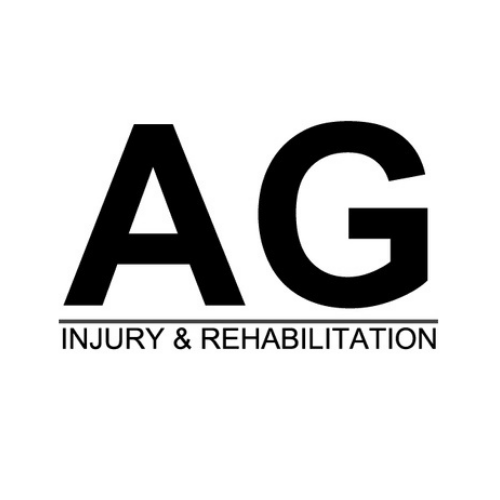Welcome to today's insightful discussion on a topic that plagues many dedicated runners: "What are the common causes of hip pain in runners?" I am thrilled to share my expertise in sport science and injury management, built upon over a decade of experience in the field. Hip pain is a frequently encountered issue among runners of all levels, from beginners to seasoned athletes, and it can significantly impact one's training and performance. In this post, we will delve deep into the various factors and conditions that can contribute to hip pain in runners, exploring the anatomy, mechanics, and best practices for prevention and recovery. Whether you're a marathon enthusiast or a casual jogger, understanding these common causes and their solutions will be invaluable in your quest for a pain-free and enjoyable running experience. So, let's lace up our shoes and take a stride towards uncovering the mysteries of hip pain in runners.
Anatomy of the Hip Joint
The hip joint is a remarkable structure that plays a pivotal role in our daily movements and especially in the dynamic motion of running. Comprising a ball-and-socket configuration, the hip joint connects the femur (thigh bone) to the pelvis. The rounded head of the femur fits snugly into the acetabulum, a concave socket in the pelvis, allowing for a wide range of motion in multiple planes. This design grants flexibility and stability, essential for activities like running. However, the true heroes of hip stability and function are the gluteal muscles: the gluteus maximus, gluteus medius, and gluteus minimus. These powerhouse muscles are responsible for various actions, such as extending, abducting, and externally rotating the hip joint. During running, they work harmoniously to stabilise the pelvis, control hip movement, and propel the body forward. Neglecting their strength and coordination can lead to imbalances, putting undue stress on the hip joint and potentially leading to hip pain and injury. Understanding the intricate interplay between hip anatomy and the gluteal muscles is fundamental in maintaining optimal hip health for runners.
Common running injuries in the hip
Common running injuries in the hip can be caused by various factors, including overuse, poor biomechanics, and inadequate recovery. Some of the most prevalent hip injuries that runners may experience include:
-
Iliotibial Band Syndrome (ITBS): ITBS occurs when the iliotibial band, a thick band of connective tissue running from the hip to the knee, becomes inflamed or tight. It often leads to sharp pain on the outer part of the hip.
-
Hip Bursitis: Hip bursitis involves inflammation of the bursa sacs, which provide cushioning between tendons, muscles, and bones in the hip joint. Runners may experience pain on the outside of the hip.
-
Hip Flexor Strain: The hip flexor muscles, responsible for lifting the leg, can become strained or injured due to overuse or improper form, resulting in discomfort in the front of the hip.
-
Stress Fracture: Overtraining and repetitive impact can lead to stress fractures in the hip, particularly in the femoral neck or the pelvic bones. These fractures can be extremely painful and require rest and proper rehabilitation.
-
Snapping Hip Syndrome: This condition involves a snapping sensation in the hip when running, often caused by the iliotibial band or the iliopsoas tendon moving over bony structures. It can be painful and affect performance.
-
Labral Tears: The acetabular labrum is a cartilage structure in the hip joint. Tears or damage to the labrum can result from repetitive motion, causing pain and limited hip mobility.
-
Osteoarthritis: While more common in older individuals, runners can develop hip osteoarthritis due to years of high-impact activity. This condition involves the degeneration of the hip joint's cartilage and can lead to pain and stiffness.
-
Muscle Imbalances: Weakness or imbalances in the hip and gluteal muscles can contribute to various hip injuries. Proper strength training and conditioning are essential for injury prevention.
-
Piriformis Syndrome: The piriformis muscle, located deep in the buttocks, can become tight or irritated, compressing the sciatic nerve and causing hip and buttock pain.
-
Hip Impingement (Femoroacetabular Impingement - FAI): FAI occurs when there is abnormal contact between the hip's ball and socket, leading to pain, limited range of motion, and potential cartilage damage.
It's important for runners to pay attention to their bodies, practice proper running form, gradually increase training intensity, and incorporate cross-training and recovery strategies to reduce the risk of hip injuries. If any hip discomfort or pain arises, it's advisable to seek medical evaluation and guidance for proper diagnosis and treatment. It is important to understand these injuries often overlap and you may suffer several of them at the same time (to some extent). You may also experience secondary symptoms such as piriformis pain, an irritated sciatic nerve and other issues in the hip regions.
How to fix glute pain when running?
What are the causes of running-related hip injuries?
To fix glute pain effectively, it helps to understand the root cause of the pain and how and why you might be getting injured in the first place. Running-related hip injuries can stem from a combination of factors, often involving overuse, biomechanical issues, and training errors. Prolonged and repetitive impact on the hip joint, coupled with inadequate recovery, can lead to various injuries. Poor running mechanics, such as excessive pronation (inward rolling of the foot), overstriding, or improper form, can place added stress on the hips. Muscle imbalances, particularly in the hip and gluteal muscles, can disrupt the stability of the hip joint, making it more susceptible to injuries. Additionally, rapid increases in training intensity, mileage, or running on uneven terrain without proper preparation can heighten the risk of hip problems. Factors like age, genetics, and underlying conditions may also contribute. Overall, a combination of these factors can lead to the development of running-related hip injuries, highlighting the importance of injury prevention strategies and attentive training practices for runners of all levels.
Warm up properly before running
Warming up thoroughly at the beginning of a run is a crucial step that should never be overlooked. A well-structured warm-up routine serves several essential purposes. First and foremost, it gradually increases your heart rate, improving blood flow to your muscles and preparing your cardiovascular system for the demands of running. Moreover, a proper warm-up raises your body temperature, enhancing muscle flexibility and reducing the risk of injury. It also activates the neuromuscular pathways, improving coordination and proprioception. A dynamic warm-up that includes mobility exercises and light dynamic stretches helps to loosen tight muscles and joints, ensuring a more efficient and comfortable running stride. In essence, taking the time to warm up properly not only reduces the risk of injury but also optimizes your performance potential, allowing you to run with greater comfort, efficiency, and confidence.
Foam rolling to recover from runs
Foam rolling is a valuable recovery tool for runners seeking relief from the physical toll of their workouts. After a strenuous run, muscles can become tense, knotted, or inflamed, which can lead to discomfort and hinder performance. Foam rolling involves using a cylindrical foam roller to apply pressure and massage specific muscle groups, releasing tension and promoting blood flow. This self-myofascial release technique can help break down adhesions in the fascia, improve muscle flexibility, and reduce muscle soreness. It's particularly beneficial for targeting areas prone to tightness in runners, such as the IT band, quadriceps, hamstrings, and calves. Incorporating foam rolling into your post-run routine can aid in muscle recovery, alleviate stiffness, and ultimately enhance your overall running experience by keeping your body in optimal condition. If you don't have a foam roller, you can use a tennis ball to apply pressure to trigger points to relieve pain. Rolling on tense muscles can offer pain relief and provides injury prevention benefits for future runs.
Develop strong glutes to avoid hip and lower back injuries
Developing strong glute muscles is a fundamental aspect of injury prevention, particularly for avoiding hip and lower back injuries. The gluteal muscles, including the gluteus maximus, medius, and minimus, play a pivotal role in stabilising the pelvis and supporting the spine during various movements, including running. Weak glutes can lead to poor hip and pelvic alignment, placing excessive stress on the hip joint and lower back. This can result in a range of issues, from hip pain to lower back strains. Strengthening the glutes through targeted exercises not only enhances your running performance but also helps distribute the workload more evenly across your lower body, reducing the risk of overuse injuries. It's essential to incorporate exercises like squats, lunges, hip bridges, and lateral leg raises into your training regimen to develop and maintain strong glutes, promoting better biomechanics and safeguarding your hips and lower back from injury.
Build strong hip flexors to improve your runs
Building strong hip flexors is a key strategy to enhance your running performance. The hip flexor muscles, which include the iliopsoas, play a crucial role in lifting your legs during the running stride. Weak hip flexors can lead to decreased stride efficiency, reduced power output, and even overuse injuries in other muscle groups compensating for the weakness. By incorporating targeted exercises like leg raises, knee drives, and hip flexor stretches into your training routine, you can improve the strength and endurance of these muscles. Strong hip flexors enable a more powerful and efficient leg drive, resulting in increased speed and endurance during runs. Additionally, robust hip flexors contribute to better posture and overall stability, reducing the risk of injuries and helping you maintain a smooth, controlled running stride. A mixture of concentric, eccentric and isometric exercises give a great, well-rounded approach to an exercise plan and can be the best way to strengthen the muscles around your hip(s) which can help absorb the compressive loads put through the joint, repeatedly during a run.
In conclusion, understanding the common causes of hip pain in runners is essential for both injury prevention and effective management. From the intricate anatomy of the hip joint to the critical role played by the gluteal muscles, numerous factors contribute to hip discomfort in runners. These causes, whether stemming from overuse, poor biomechanics, or muscle imbalances, can disrupt training, hinder performance, and lead to long-term injuries if left unaddressed. Recognising the signs and risk factors associated with hip pain and implementing proactive measures, such as proper warm-ups, strength training, and recovery techniques like foam rolling, are vital for runners of all levels. By prioritising hip health and understanding the intricacies of this crucial joint, runners can pave the way for a smoother, more enjoyable, and injury-free running journey. Visiting your healthcare provider or a running specialist to have a running assessment can also help to see if you have any muscular imbalances. They can then prescribe specific strengthening exercises to address your specific needs. If you are unable to run due to your injury, you may benefit from physical therapy which may include manual therapy, further exercise prescription and potentially anti-inflammatory medications depending on the injury itself.

